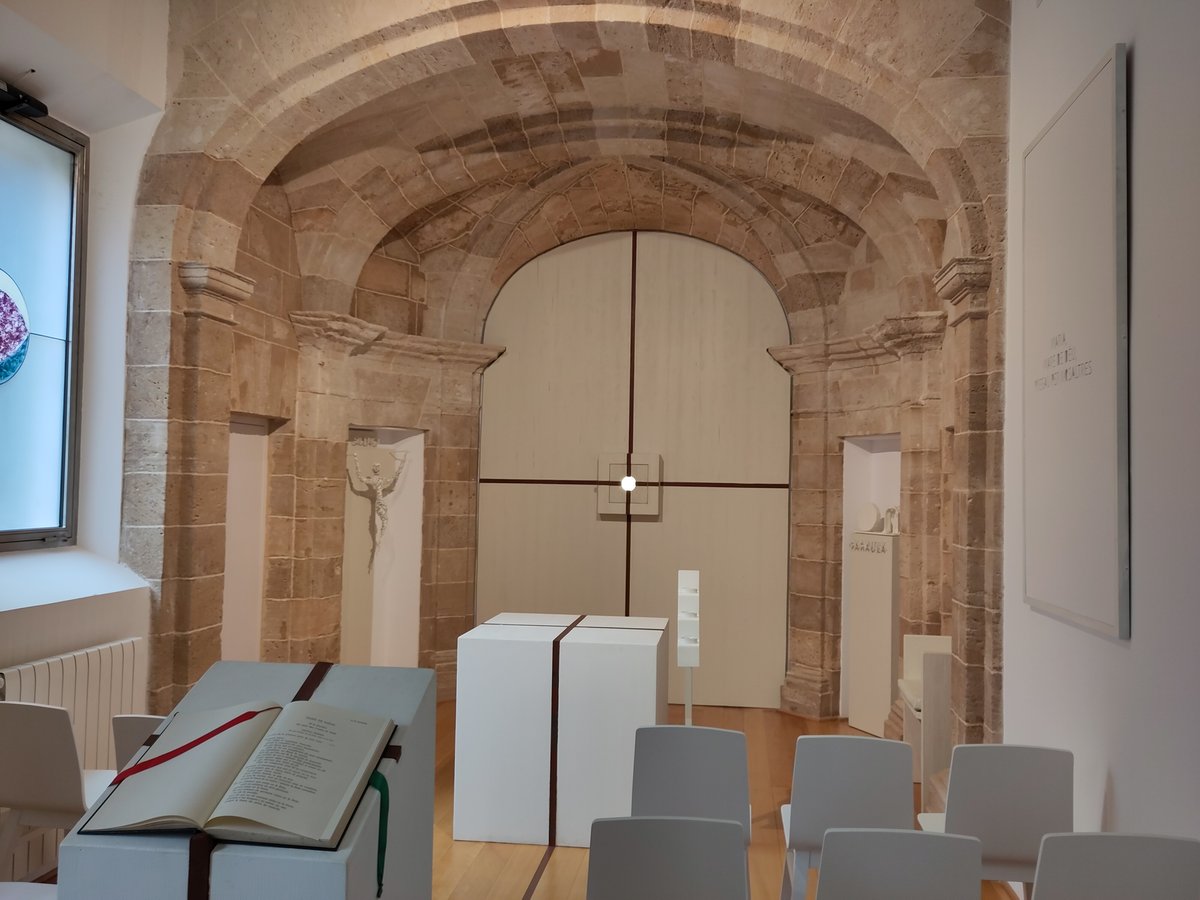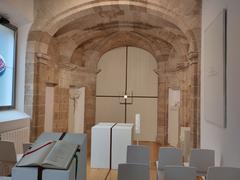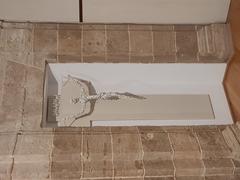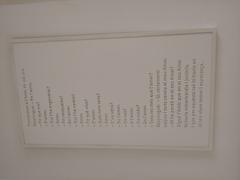
Seminari Vell Palma, Spain: Visiting Hours, Tickets, and Complete Guide
Date: 14/06/2025
Introduction
Seminari Vell (the Old Seminary) is one of Palma, Mallorca’s most significant historical and architectural landmarks. Rooted in the city’s religious, cultural, and educational fabric, it stands as a testament to centuries of spiritual life and societal change. This comprehensive guide explores Seminari Vell’s origins, architectural evolution, historical significance, and provides essential visitor information—covering visiting hours, ticketing, accessibility, and recommendations for making the most of your visit to this extraordinary Palma historical site (Accés Mallorca; Diario de Mallorca; Ajuntament de Lleida).
Table of Contents
- Historical Background and Evolution
- Architectural and Cultural Significance
- Visiting Information: Hours, Tickets, and Tips
- Practical Visitor Information
- Nearby Attractions
- Frequently Asked Questions (FAQ)
- Summary and Recommendations
- References
Historical Background and Evolution
Origins and Early History
Seminari Vell stands on land once belonging to Palma’s medieval Jewish quarter (El Call Major), a vibrant center until the late 15th century, when many Jewish properties were repurposed following the expulsion and forced conversions. The seminary’s foundation is closely tied to the Catholic Counter-Reformation: after the Council of Trent (1545–1563), diocesan seminaries were established across Spain to strengthen clerical education and discipline. Thus, Seminari Vell became one of the earliest seminaries in the country (Accés Mallorca).
Jesuit Influence and Construction
The Jesuits arrived in Mallorca in 1561, profoundly shaping Palma’s educational and religious life. Nearby, the Església de Monti-sion was built atop the former main synagogue, reflecting religious transformation and architectural grandeur. Though not exclusively Jesuit, Seminari Vell was part of the wave of religious and educational reform, with its architecture echoing the Baroque and Renaissance styles prevalent in the period.
Expansion and Modern History
Over the centuries, Seminari Vell underwent several expansions and renovations, adapting to the needs of its clerical community. In the late 19th century, under Bishop Cervera’s direction, renowned architect Bartomeu Ferrà led a neo-Gothic redesign that remains a defining feature today (Diario de Mallorca). The seminary’s history also includes somber chapters: during the Spanish Civil War, it was used as a concentration camp and prison (Ajuntament de Lleida).
Architectural and Cultural Significance
Neo-Gothic Design and Construction
Seminari Vell exemplifies Palma’s neo-Gothic revival. The 1887 remodeling by Bartomeu Ferrà, with subsequent input from Juan Sureda and rector Miguel Maura, introduced pointed arches, ribbed vaults, ornate tracery, and dramatic stonework. The chapel is renowned as one of Palma’s finest neo-Gothic interiors, featuring stained glass, intricate woodwork, and an impressive altarpiece (Diario de Mallorca).
Despite its international style, Seminari Vell harmoniously integrates local Mallorcan building traditions, with craftsmen employing native stone and motifs inspired by Palma’s casals and churches.
Educational and Religious Role
For centuries, Seminari Vell was the primary institution for training priests in Mallorca, shaping generations of clergy and intellectuals. Its curriculum blended theology, philosophy, and the arts, fostering a vibrant intellectual and cultural community (Accés Mallorca).
Connection to Palma’s Jewish Heritage
Located near the heart of Palma’s former Jewish quarter, Seminari Vell’s surroundings—such as Carrer de la Pelleteria—reveal the city’s multicultural layers and encourage visitors to explore Palma’s pluralistic past (Nomads Travel Guide).
Visiting Information: Hours, Tickets, and Tips
Location and Access
Seminari Vell, now housed at the Col·legi de la Sapiència in Palma’s old town, is easily reached on foot from central landmarks. Public transport from Palma de Mallorca Airport (PMI) is convenient, with EMT bus line A1 connecting the airport to the city center (visitpalma.com).
Visiting Hours and Ticket Information
- Visiting Hours: Opening times are generally Monday to Friday, 9:00 AM to 6:00 PM, but may vary on holidays or during special events. As the seminary is an active institution, visits usually require advance booking or coincide with guided tours, cultural events, or open days.
- Tickets: Entrance is typically free. Special exhibitions or guided tours may require a nominal fee and pre-reservation. Confirm details via the official Seminari Mallorca website or local tourist offices.
Accessibility
Due to the historic nature of the building, accessibility is partially limited. The main areas of the Col·legi de la Sapiència offer wheelchair access, but some sections may have stairs or narrow corridors. Contact the seminary in advance if you have specific mobility needs.
Visitor Facilities
Onsite amenities are minimal, with restroom access usually available only during guided tours or events. However, the old town’s cafés, restaurants, and shops are just minutes away.
Photography and Etiquette
Photography is permitted in public spaces, but restrictions may apply during services or private events. Always ask for permission and dress respectfully—covering shoulders and knees and removing hats in sacred spaces.
Tips for Your Visit
- Plan ahead and arrange your visit in advance, especially if joining a guided tour.
- Combine your visit with nearby attractions such as Palma Cathedral (La Seu), Almudaina Palace, and the old Jewish quarter.
- For optimal photos, visit in the morning or late afternoon for the best natural light.
- Use the Audiala app or consult local tourist offices for the latest updates and digital resources.
Practical Visitor Information
- Language: Spanish and Catalan are official; English is widely understood in tourist settings.
- Currency: Euro (€); credit cards accepted, but cash is useful for small donations or purchases.
- Dress Code: Modest attire is expected; silence and respectful behavior are required, especially during religious activity.
- Safety: Palma is generally safe; dial 112 for emergencies (visitpalma.com).
Getting Around
- Public Transport: EMT buses, SFM trains, and taxis serve the city efficiently.
- Parking: Limited in the old town—use public transport or nearby car parks when possible.
Weather and Best Time to Visit
Palma’s Mediterranean climate means mild winters and hot, dry summers. Spring and autumn are ideal for comfortable sightseeing.
Nearby Attractions
- Palma Cathedral (La Seu): Gothic masterpiece a short walk away.
- Bellver Castle: Unique circular castle with panoramic views (intelier.com).
- Arab Baths: Traces of Palma’s Moorish history.
- Sa Llotja: 15th-century merchant’s hall now hosting exhibitions.
- Plaza Mayor: Vibrant central square for shopping and dining.
Explore more in the official Palma tourist guide.
Frequently Asked Questions (FAQ)
Q: What are Seminari Vell’s visiting hours?
A: Monday to Friday, 9:00 AM to 6:00 PM; check for updates during holidays or special events.
Q: Is there an entrance fee?
A: General admission is free. Fees may apply for special tours or exhibitions.
Q: How do I arrange a guided tour?
A: Book through the Seminari Mallorca website or ask at local tourist offices.
Q: Is Seminari Vell wheelchair accessible?
A: Main areas are accessible, but some sections may require assistance. Contact ahead for details.
Q: Can I take photographs?
A: Allowed in public areas, but restrictions apply during services or events. Always seek permission.
Summary and Recommendations
Seminari Vell stands as a vital symbol of Palma’s religious, educational, and architectural legacy. Its layered past—from the Counter-Reformation to 19th-century neo-Gothic transformation, and its role during the Spanish Civil War—reflects Mallorca’s complex cultural heritage (Accés Mallorca; Diario de Mallorca; Ajuntament de Lleida).
Visitor Tips:
- Plan ahead; visits may require booking.
- Respect the building’s religious and historic context.
- Use digital resources like the Audiala app for updates, guided tours, and event information.
- Combine your visit with nearby Palma landmarks for a richer experience.
Embark on your journey to Seminari Vell and discover the remarkable stories and architecture that have shaped Palma’s historic landscape.
References
- Seminari Vell Visiting Hours and History: A Guide to Palma’s Historic Seminary, 2024, Accés Mallorca
- Exploring Seminari Vell: A Neo-Gothic Masterpiece and Palma Historical Site, 2017, Diario de Mallorca
- Seminari Vell Visiting Hours, Tickets, and Guide to Palma’s Historic Seminary, 2024, Visit Palma
- Visiting Seminari Vell in Palma: Hours, Tickets, and Nearby Historical Sites, 2024, Seminari Mallorca
- Seminari Vell Centre Historic, 2019, Ajuntament de Lleida
- Palma’s Jewish Quarter, Nomads Travel Guide
- 10 Places to Visit in Palma de Mallorca, Intelier
- Things to Do in Palma de Mallorca, Voyage Tips
- Palma Weather and Travel Advice, Spain.info
- Palma Practical Information, palma.es
- Mallorca Island Tours, TourRadar
- UK Tourists Warned: Mallorca Overtourism, Mirror
- Palma City Guide, Lonely Planet
For the latest updates, guided tour bookings, and digital resources, download the Audiala app and follow us on social media.













































